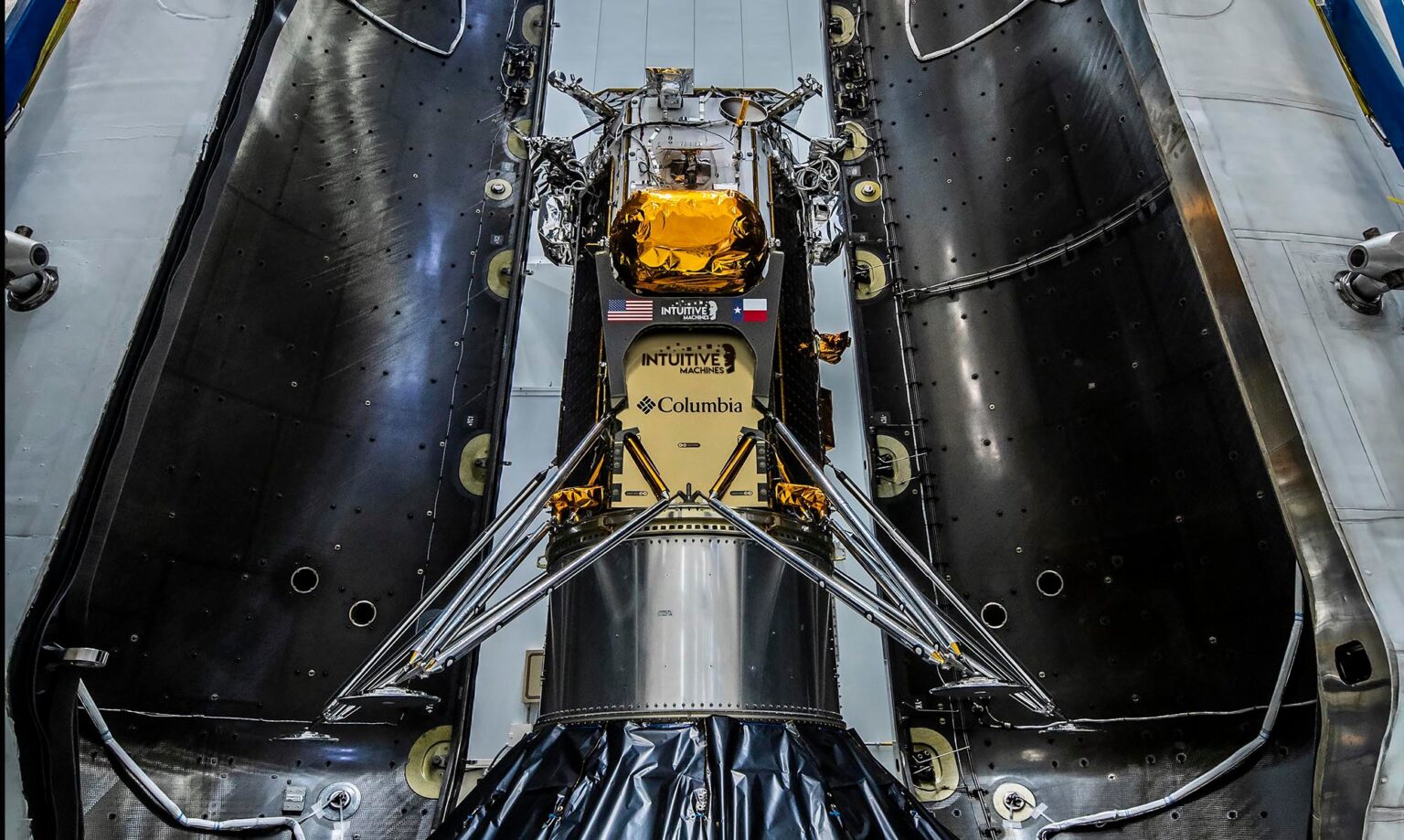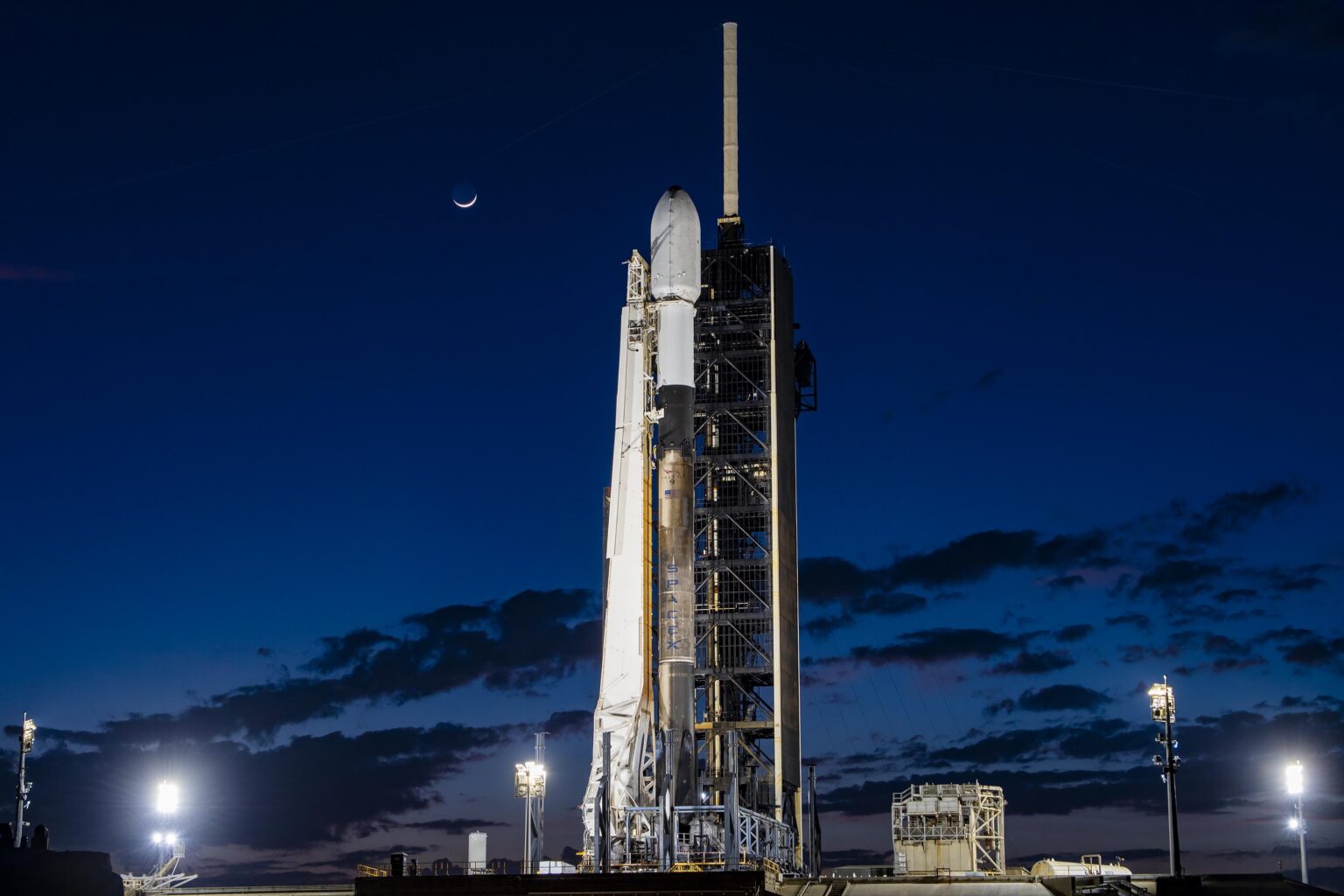On 14 February, a Falcon 9 rocket will be launched from the Cape Canaveral. It will send the Odysseus (Nova-C) probe built by Intuitive Machines to the Moon.
Technical design of Odysseus
In 2019, Intuitive Machines became one of the participants in the NASA-funded CLPS (Commercial Lunar Payload Services) programme. Its main goal is to attract commercial firms to the lunar exploration. Odysseus is the first probe to be launched by Intuitive Machines on behalf of NASA. The contract for this mission is worth $77 million.

Odysseus weighs 1931 kg (when refuelled). It is comparable in size to a telephone booth. Its dimensions are 2.2×2.4×3.9 metres.
Twelve cargoes are placed on board. Six of them are owned by NASA. These include a laser reflector, a stereo camera for studying dust plumes that will be raised by the lander’s engines, radio instruments, a LIDAR device, and a device for a navigation experiment. The total weight of the cargo provided by NASA is 39 kg. Thus, the aerospace administration pays approximately $2 million to deliver one kilogram to the Moon.
The remaining six cargoes were provided by various private customers, from Embry-Riddle Aeronautical University to the artist Jeff Koons, whose sculptural installation decorated the probe’s body. The most interesting of these is the EagleCAM selfie camera, which will be dropped by Nova-C before landing and is intended to capture the landing of the spacecraft.
The Doge-1 cubesat, whose share was paid for with the Dogecoin cryptocurrency, will also go to the Moon as a passing cargo along with Odysseus. According to the designers, it will broadcast advertisements, logos and various images to the Earth, which will be displayed on the external screen of the vehicle during its stay in lunar orbit.
Live broadcast of the Odysseus launch
The ballistic window for the Odysseus launch will open on 14 February at 07:57 Kyiv time. The launch will be broadcast live on the NASA website. If the probe fails to launch to the Moon on Valentine’s Day, backup windows will be opened on 15 and 16 February.
Odysseus flight plan
Unlike other recent lunar missions, which took a long time to get to the Moon due to the need to save fuel, Odysseus will go directly to the Moon. If all goes well, it will land on 22 February. The estimated time Odysseus will spend on the lunar surface is seven days.

The mission will land at the 24-kilometre-long Malapert A crater, located about 300 km from the satellite’s south pole. Not far from it is the so-called Malapert massif
, whose summit is considered one of the possible landing sites for the Artemis III expedition.
If successful, Intuitive Machines will become the first private company to deliver cargo to the Moon. Before it, the Israeli non-profit organisation SpaceIL (Bereshit), the Japanese company ispace (Hakuto-R) and the American Astrobotic (Peregrine) tried to do this. But for various reasons, they all failed.

